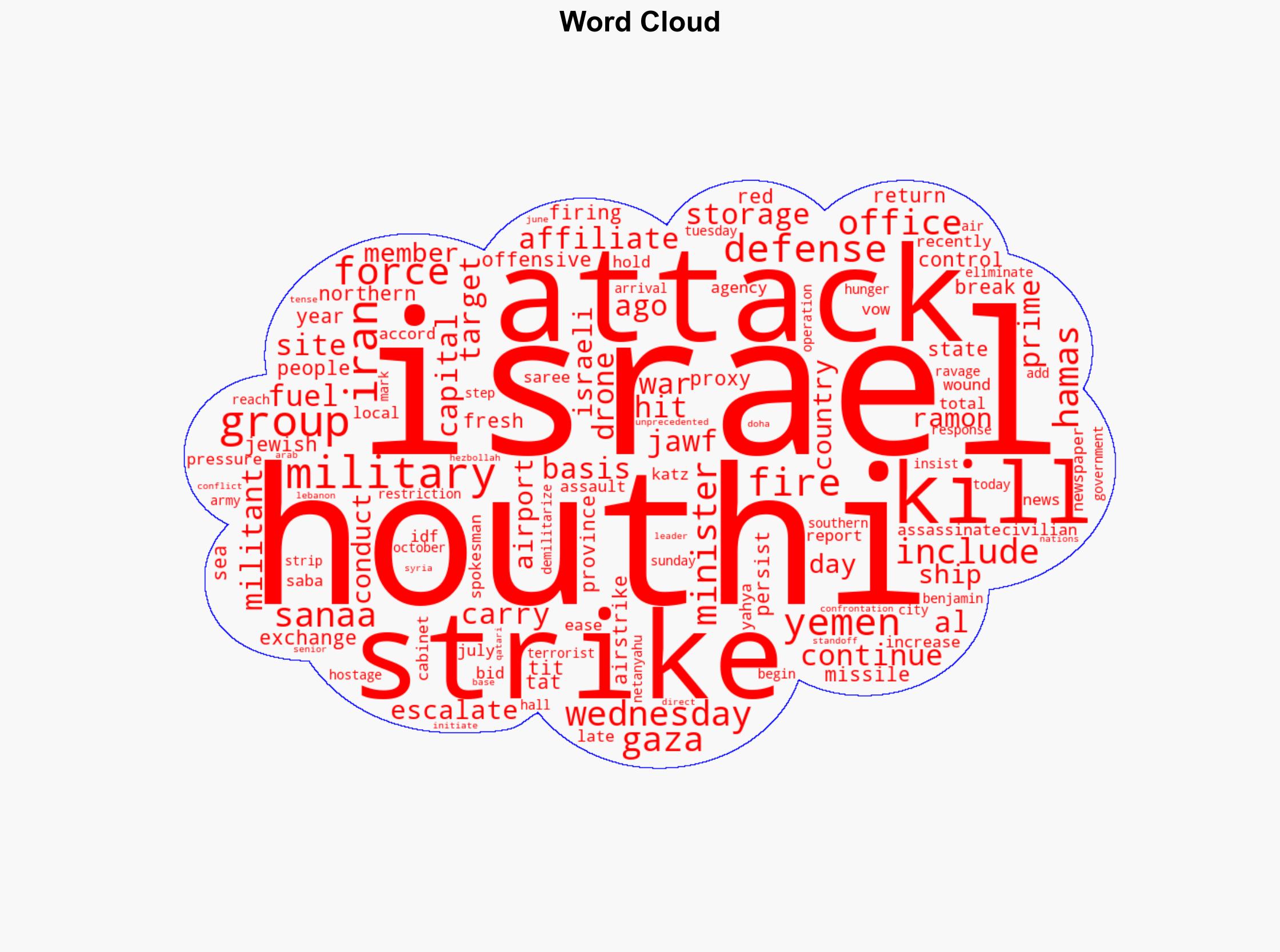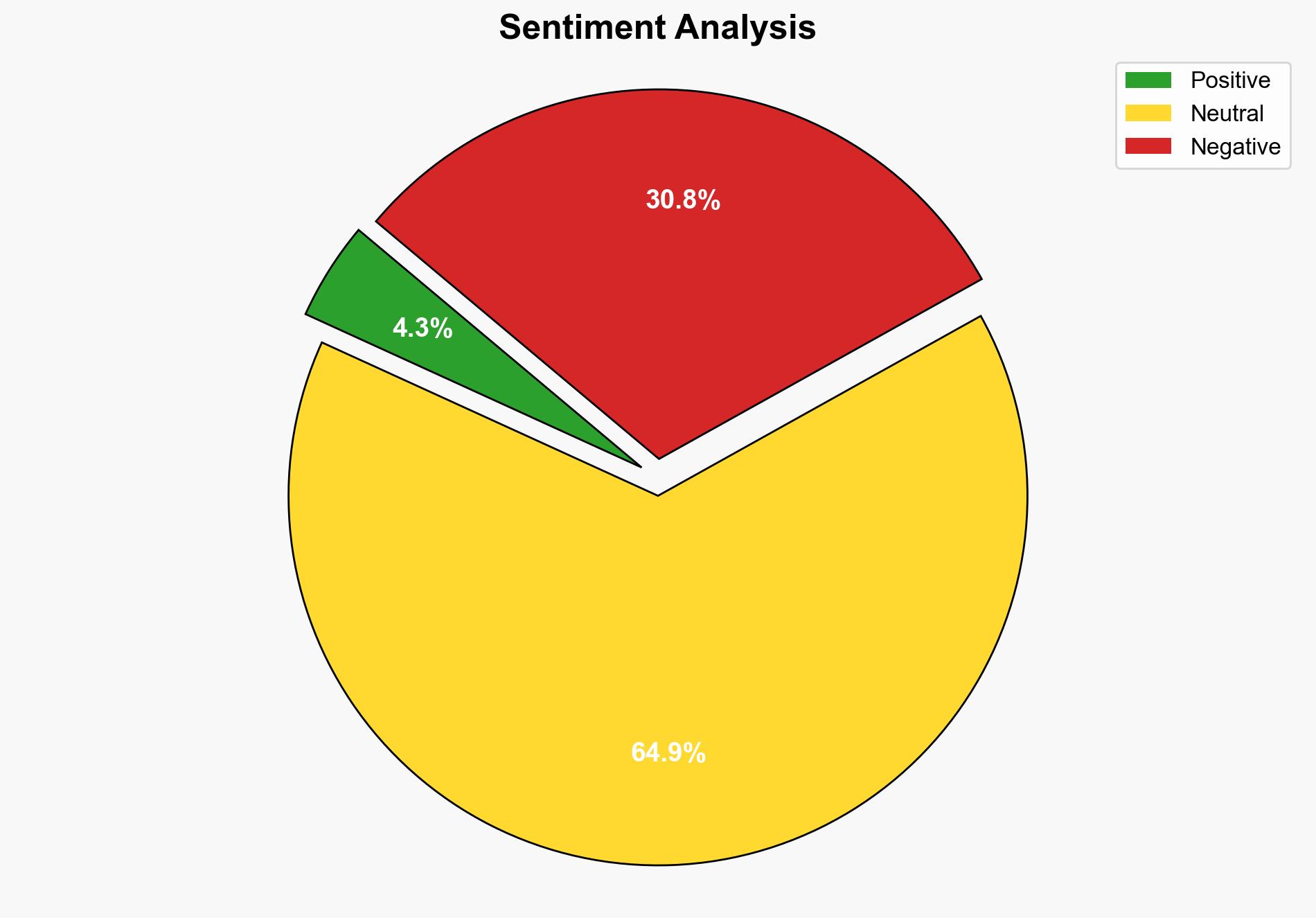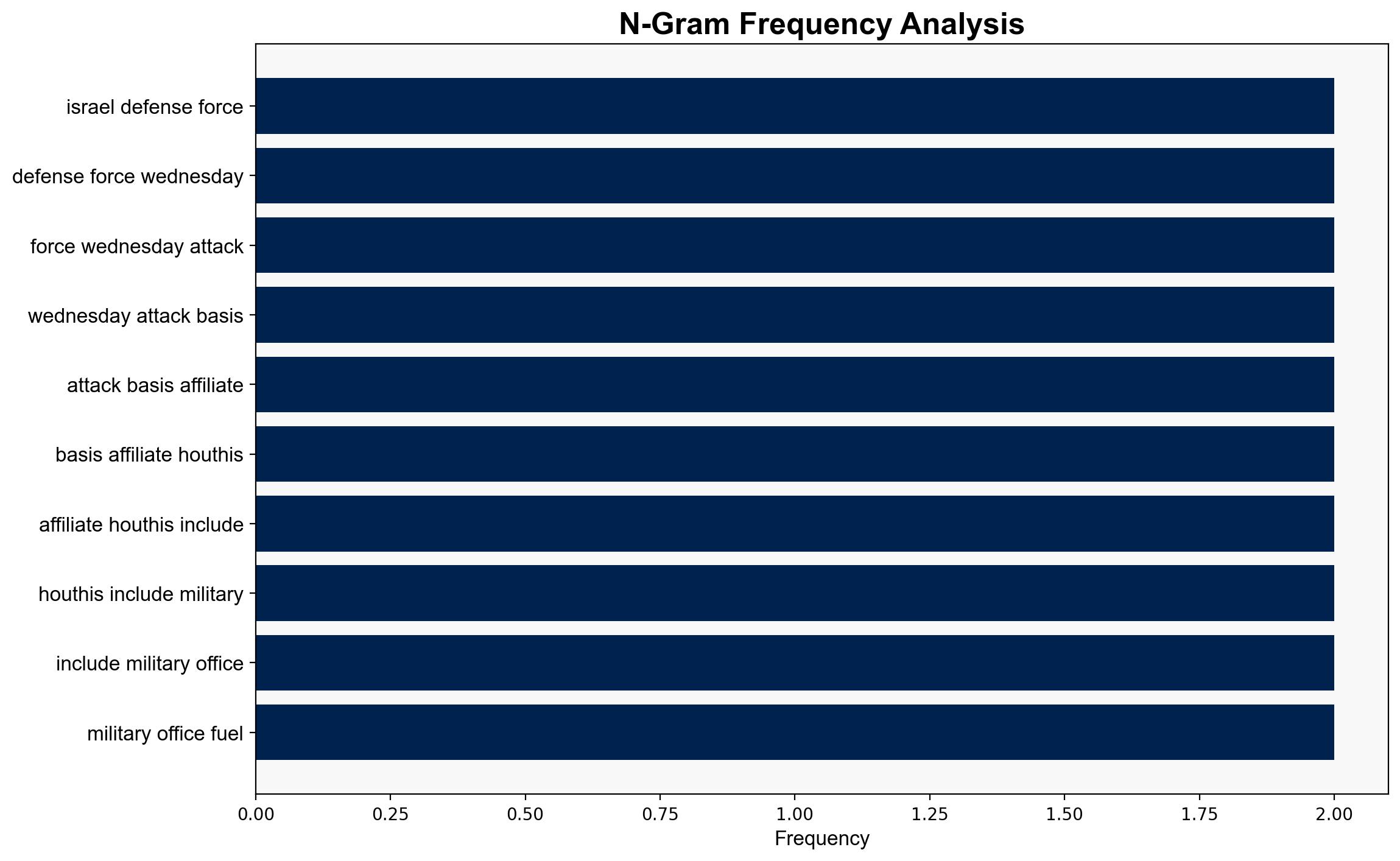Israel Kills 35 In Yemen As Fire Exchange With Houthis Continues – Ndtvprofit.com
Published on: 2025-09-11
Intelligence Report: Israel Kills 35 In Yemen As Fire Exchange With Houthis Continues – Ndtvprofit.com
1. BLUF (Bottom Line Up Front)
The ongoing conflict between Israel and the Iran-backed Houthi group in Yemen has escalated, with significant casualties reported. The most supported hypothesis is that Israel’s military actions are a strategic effort to counter Iranian influence in the region, using the Houthis as a proxy target. Confidence level: Moderate. Recommended action: Enhance diplomatic engagement to de-escalate tensions and monitor for potential retaliatory actions by Iran or its proxies.
2. Competing Hypotheses
1. **Hypothesis A**: Israel’s strikes are primarily aimed at degrading the military capabilities of the Houthis to prevent further attacks on Israeli interests, particularly in the Red Sea region.
– **Supporting Evidence**: The strikes targeted military offices and fuel storage sites, which are critical for sustaining Houthi operations.
– **Contradictory Evidence**: Claims of civilian targets being hit could suggest broader objectives or collateral damage.
2. **Hypothesis B**: The strikes are part of a broader Israeli strategy to counter Iranian influence in the Middle East by targeting its proxies, such as the Houthis.
– **Supporting Evidence**: The Houthis are backed by Iran, and Israel’s actions align with its historical approach to counter Iranian expansion.
– **Contradictory Evidence**: The focus on Yemen might divert resources from other critical fronts, such as Lebanon or Syria.
3. Key Assumptions and Red Flags
– **Assumptions**: It is assumed that the Houthis are acting primarily as Iranian proxies and that their actions are directly influenced by Tehran. Another assumption is that Israel’s military capabilities are sufficient to manage multiple fronts simultaneously.
– **Red Flags**: Reports of civilian casualties could undermine Israel’s strategic objectives and lead to increased international condemnation. The potential for misinformation or biased reporting from involved parties should be considered.
– **Blind Spots**: Limited information on the internal dynamics within the Houthi leadership and their decision-making processes.
4. Implications and Strategic Risks
The escalation in Yemen could lead to broader regional instability, potentially drawing in other actors such as Saudi Arabia or the UAE. There is a risk of retaliatory attacks on Israeli or allied interests, which could include cyber operations or asymmetric warfare tactics. Economically, disruptions in the Red Sea could affect global shipping routes, impacting international trade.
5. Recommendations and Outlook
- Enhance intelligence-sharing with regional allies to better anticipate and respond to Houthi actions.
- Engage in diplomatic efforts to de-escalate tensions, potentially involving back-channel communications with Iran.
- Scenario-based projections:
– **Best Case**: Successful diplomatic intervention leads to a ceasefire and reduced hostilities.
– **Worst Case**: Escalation leads to a broader regional conflict involving multiple state actors.
– **Most Likely**: Continued low-intensity conflict with sporadic escalations.
6. Key Individuals and Entities
– Benjamin Netanyahu
– Yahya Saree
7. Thematic Tags
national security threats, cybersecurity, counter-terrorism, regional focus




